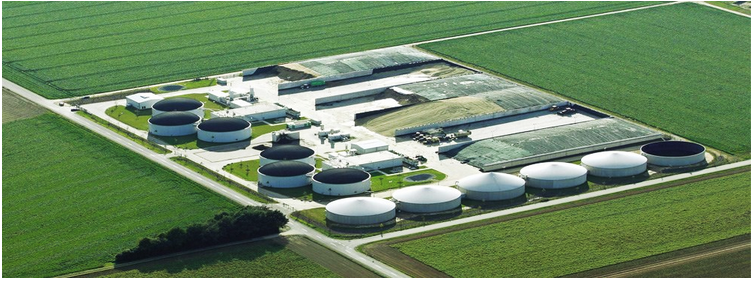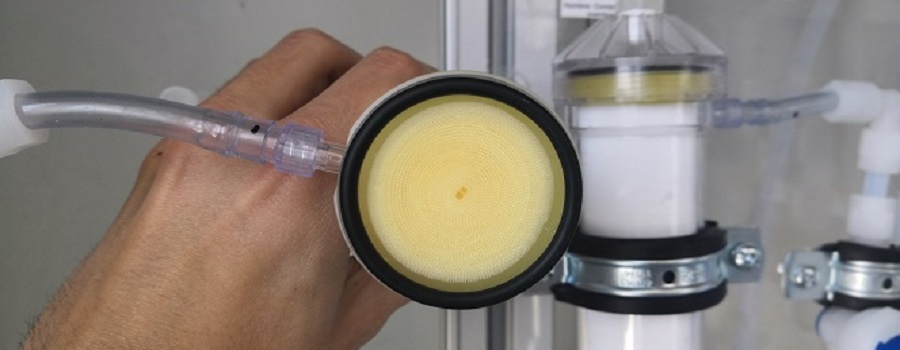In the arduous path towards sustainable development, research to obtain alternative fuels to fossils is presented as a key point. In this framework, two interesting actors have emerged to stay: biogas and biomethane.
Before going into the subject, let’s dig a bit into the current national gas system. Natural gas is one of the fuels most used by society, both in industry and in homes. Chemically, it is a gas composed mainly of methane 95-99% (CH4) and small proportions of other compounds. From its treatment, management and consumption in Spain, we must know two important aspects:
- Almost all the natural gas we consume in Spain comes from non-renewable sources.
- All this gas is mainly imported from countries such as Algeria, Norway, Nigeria or Qatar, either through the network of gas pipelines or through the transport of liquefied natural gas in large gas tankers.
While it is true that in comparison with other fuels the use of natural gas is better seen as it reduces emissions of CO2, particles and NOx, it is still a fossil fuel. World natural gas reserves are estimated on 193 trillion m3, enough to cover demand for 52 years.
Biogas and biomethane are considered an interesting sustainable alternative in the fuel supply chain. Biogas is the fuel gas resulting from the degradation of organic compounds through a biological process. Depending on the precursors used, the volume composition of biogas ranges between 50% and 70% methane and 50% and 30% CO2. Biogas is an ideal fuel to generate heat or electricity, but, due to its low concentration of methane, it can not be used in its original form as a fuel for transportation nor can it be injected into the natural gas network. However, it can be ‘upgraded’ to be suitable for these last two applications. This improved biogas is known as biomethane. The CH4 / CO2 ratio of biomethane ranges between 95/5 and 99/1, a composition very similar to natural gas.
The key to make biogas and biomethane sustainable gases is to use as waste raw material that can not be reused or recycled. Not only do we talk about the typical urban waste that goes to the landfill, but also agricultural, livestock or wastewater are of high interest. These residues, when degraded, spontaneously emit methane into the atmosphere, whose impact on greenhouse emissions (GHG) is 21 times higher than CO2. In this way, this methane is generated in a controlled manner and after combustion is transformed into CO2, thus reducing the impact of GHG emissions.
The potential that Spain has to develop biomethane is very wide. Agriculture and livestock, one of the main engines of the national economy, generate an extensive amount of waste that contains very good “methanisable” characteristics. Likewise, every year each Spaniard generates half a tonne of direct waste, which is around 22,000 tonnes/year. The fact of being able to convert this waste into a fuel makes it possible to reduce greenhouse effect emissions at the same time as covering part of the imported natural gas consumption. The advantages are not only environmental; this new model allows the creation of new green jobs.

For the generation of biomethane there are multiple technologies, the anaerobic digestion followed by an upgrading is one of the best known and exploited. Anaerobic digestion consists on introducing a residue in a digester in absence of oxygen. In this digester the waste comes into contact with a biological culture (yes, bacteria) that are responsible for breaking down (hydrolysis) the long carbon chains, typical of organic matter, into smaller chains. After a few days, these bacteria continue to degrade the most simple carbon chains into methane. The product of this process is a mixture of gases, known as biogas, mainly composed of 60% methane, 40% CO2 and a minimum concentration of impurities such as hydrogen sulphide. In the process is generated a liquid waste called digestate that can be reused as a fertilizer because it is rich in nitrogen and phosphorus.
Once the anaerobic digestion is finished it is necessary to improve the quality of the biogas so that it can be used as fuel for vehicles or injected into the natural gas grid, this process is known as upgrading. After upgrading, the biomethane has a concentration close to 99%. There are different technologies that allow this process to be carried out:
- Amine Absorption: Amines have high selectivity to attract CO2. The process is about “showering” the biogas with a dissolution of amines, which will sweep away the CO2, leaving the methane almost pure. The major disadvantage of this process is that the amines are not environmentally favourable.
- Pressure swing adsorption (PSA): At high pressures, gases tend to be attracted to solid surfaces, or “adsorbed”. The higher the pressure, the more gas is adsorbed. Once the pressure is reduced the gas is released or un-adsorbed. This process requires a very high initial investment.
- Membranes: This is a physical separation, as the biogas stream is passed through a porous membrane. The CO2 passes through the pores, while the methane remains. In order to obtain good separation yields, it is necessary to apply high pressures, making the process more expensive. In addition, methane slip is usually around 20% through the membrane pores, especially as they deteriorate.
- Membrane contactor: These are the newest of those exposed. This technology agglutinates numerous membranes in the same shell, allowing the gas to pass through the inside of the membranes and a liquid flow through the casing. This combines physical and chemical separation. In this way, it is possible to work at lower pressures than in traditional membranes, as the water is able to dissolve part of the CO2, as well as reducing methane slip.
Once purified the biomethane would be almost ready for final use, or injection into the network. The last necessary process would be to compress it until the normal working pressure, for example, the natural gas grid is at a pressure of between 16-60 bars, or if it is desired to use as fuel a pressure of approximately 200 bars is required.
In some European countries such as Germany or Italy there are already industrial facilities that allow the production of biomethane, however, in Spain the biomethane market is still to be exploited. Aware of the potential that we have to develop the technology, policies are needed to make this market open gradually and be able to produce our own biomethane. This would reduce gas imports, the amount of waste produced and greenhouse gas emissions (and their corresponding EU fines) at the same time as creating jobs.
- From natural gas to biogas and biomethane - 26 June 2019
- Blockchain and the electric market customers - 18 April 2017
